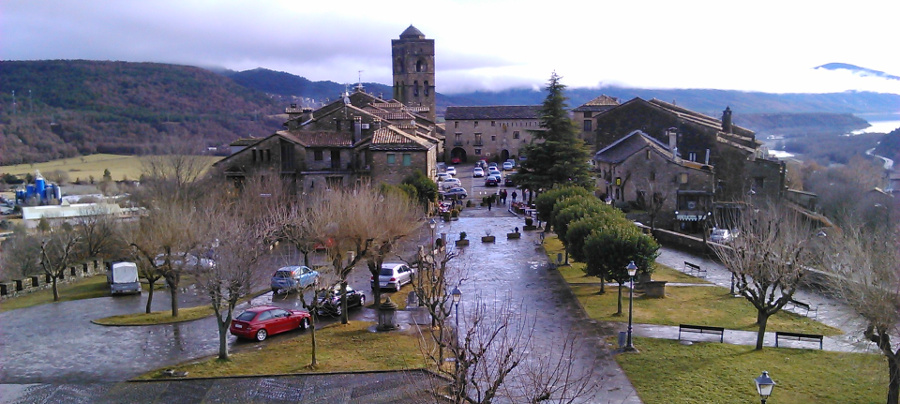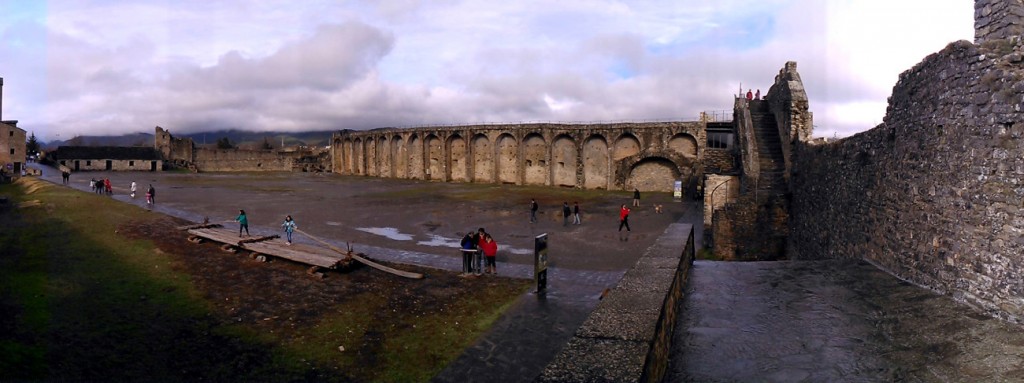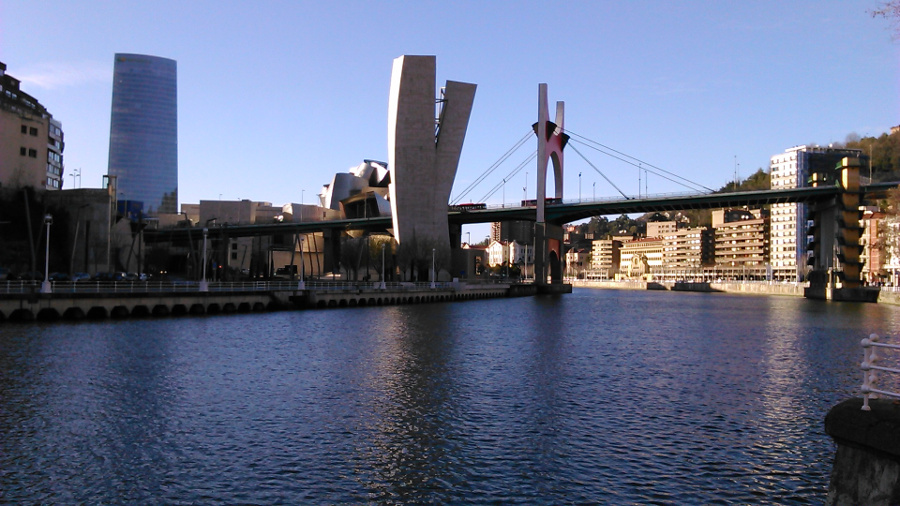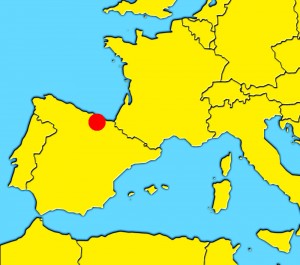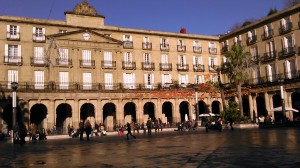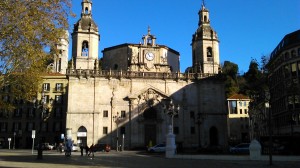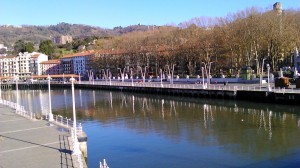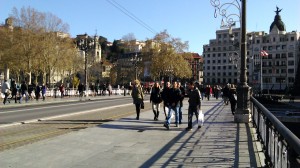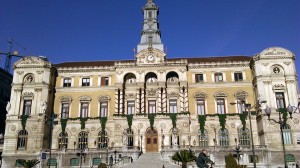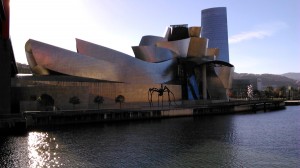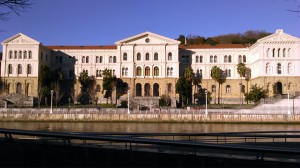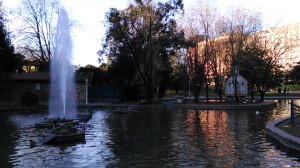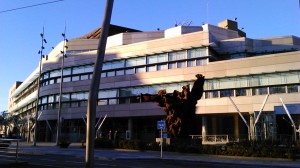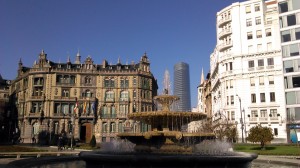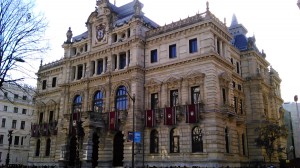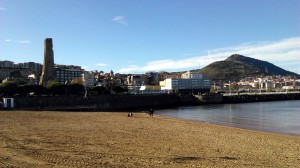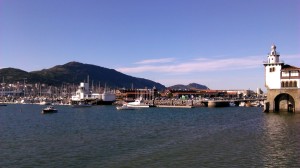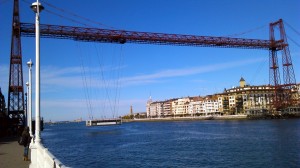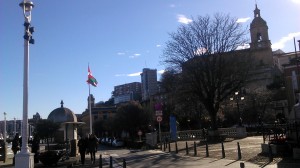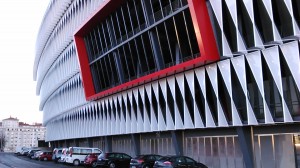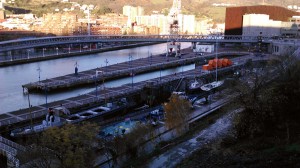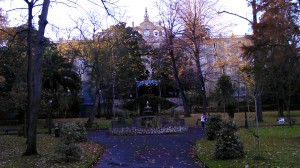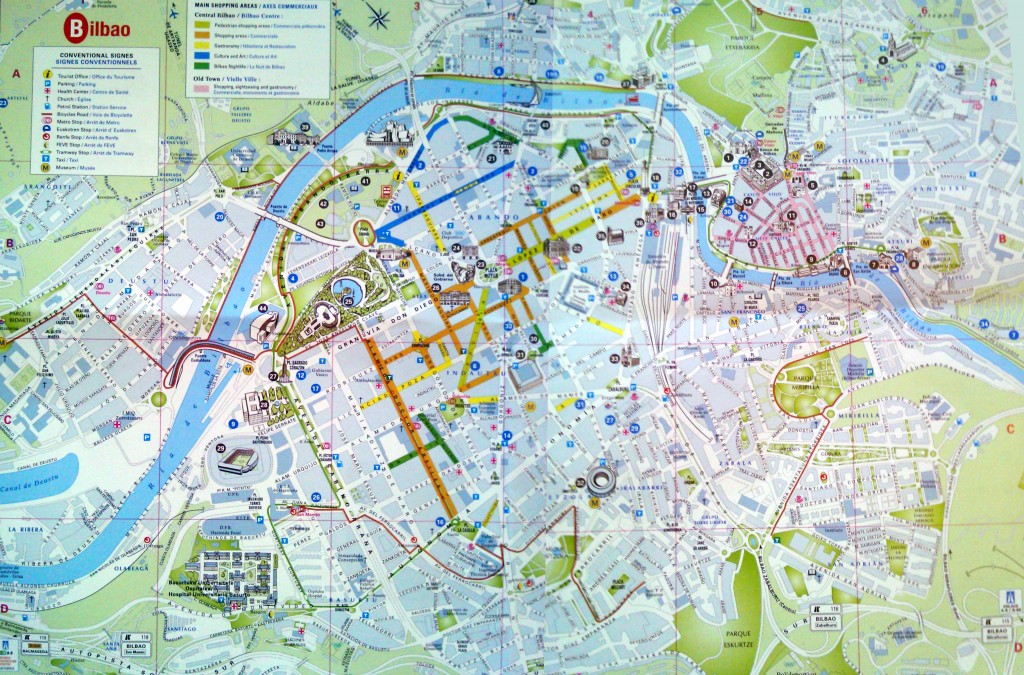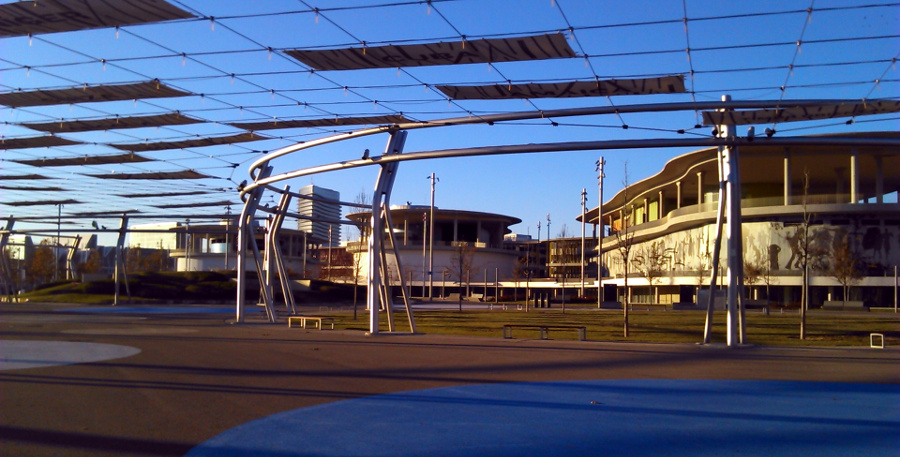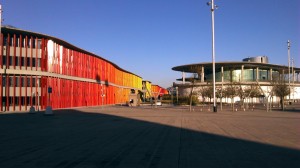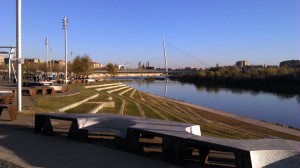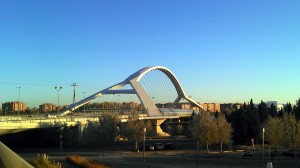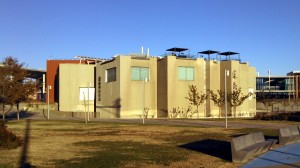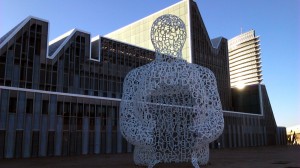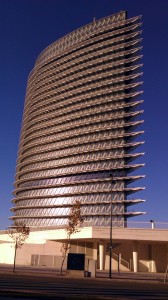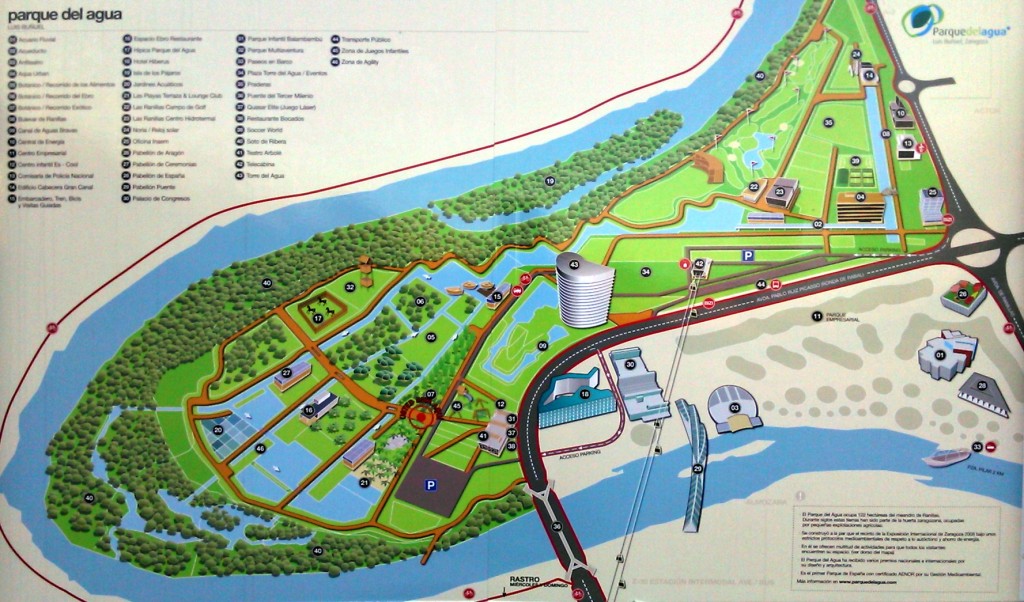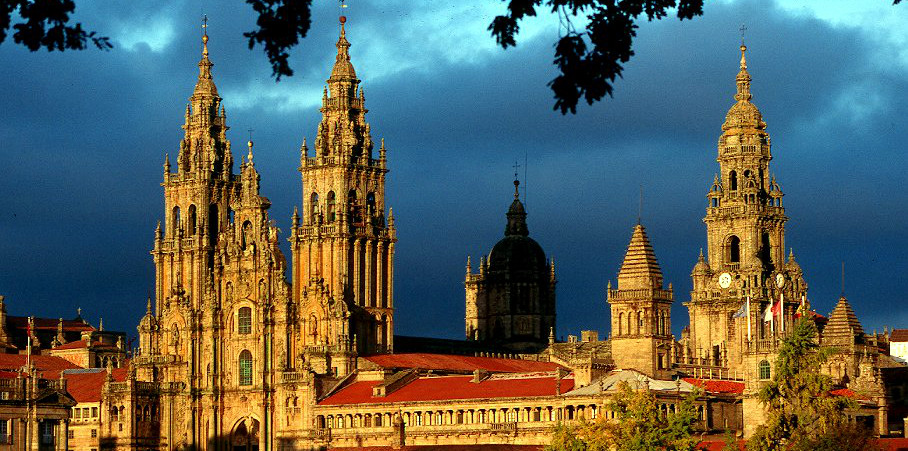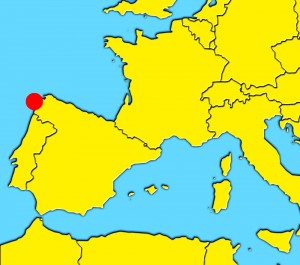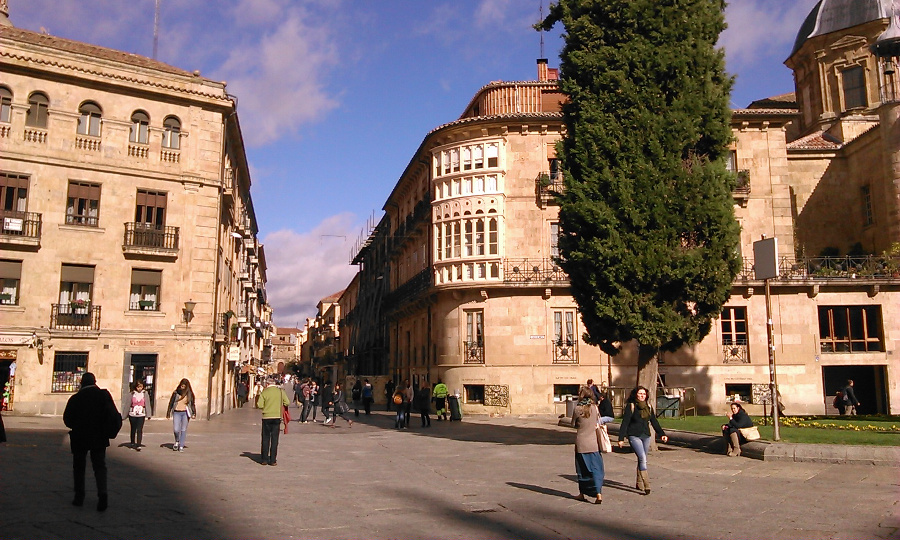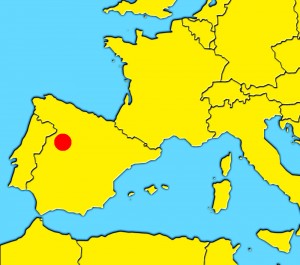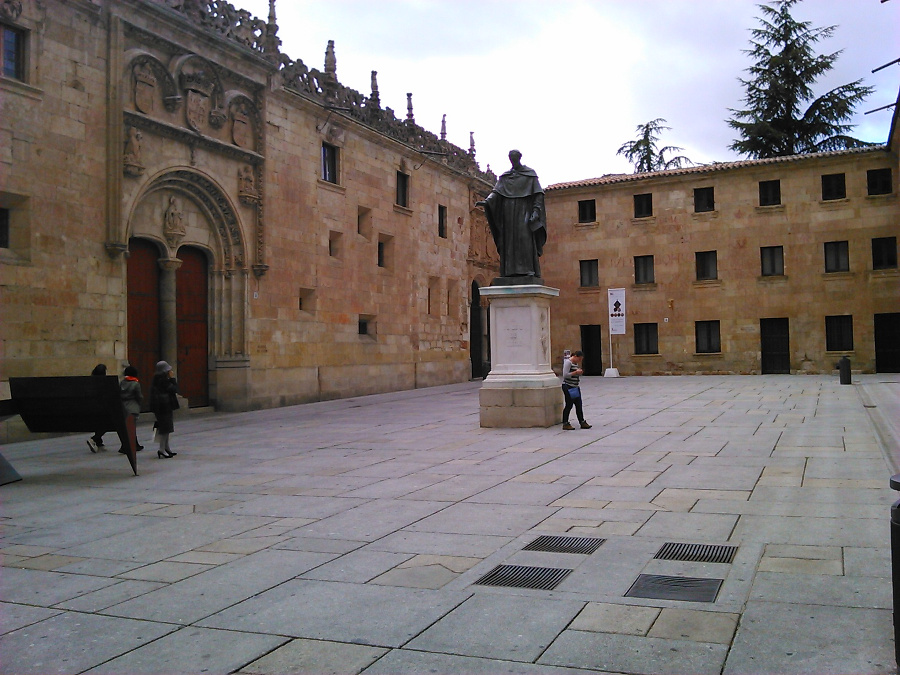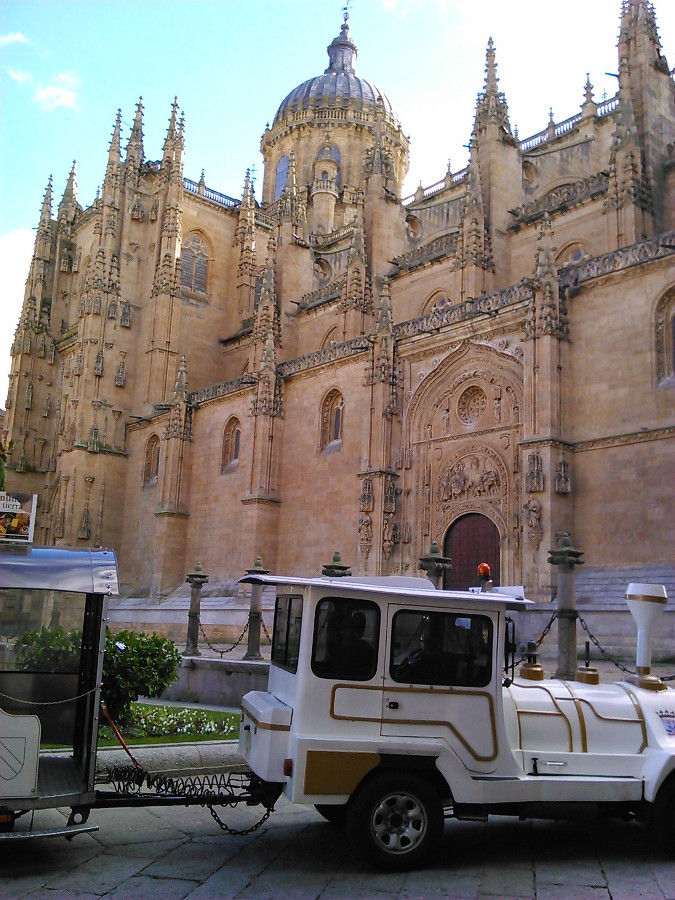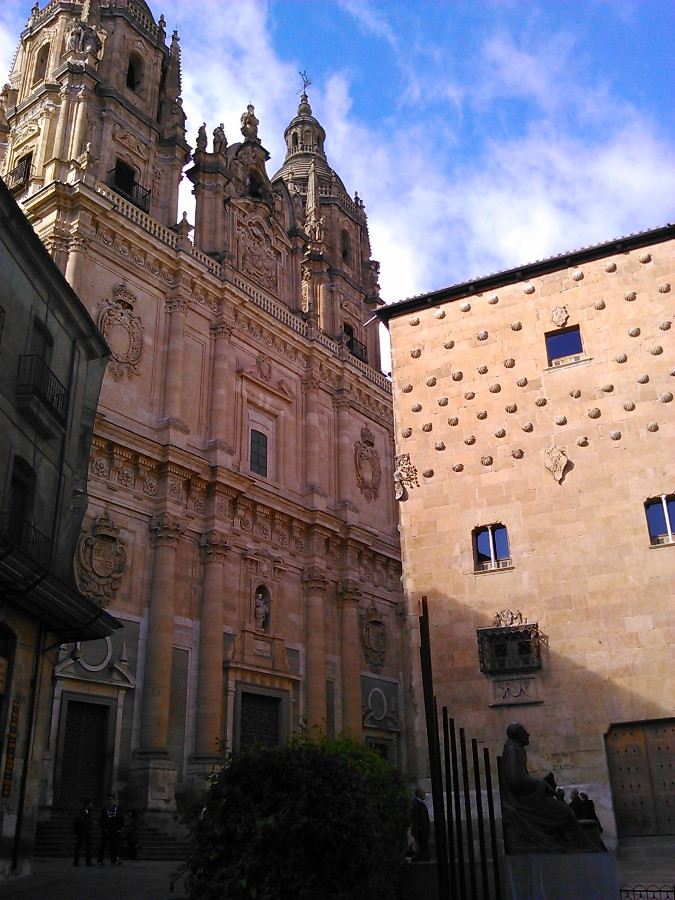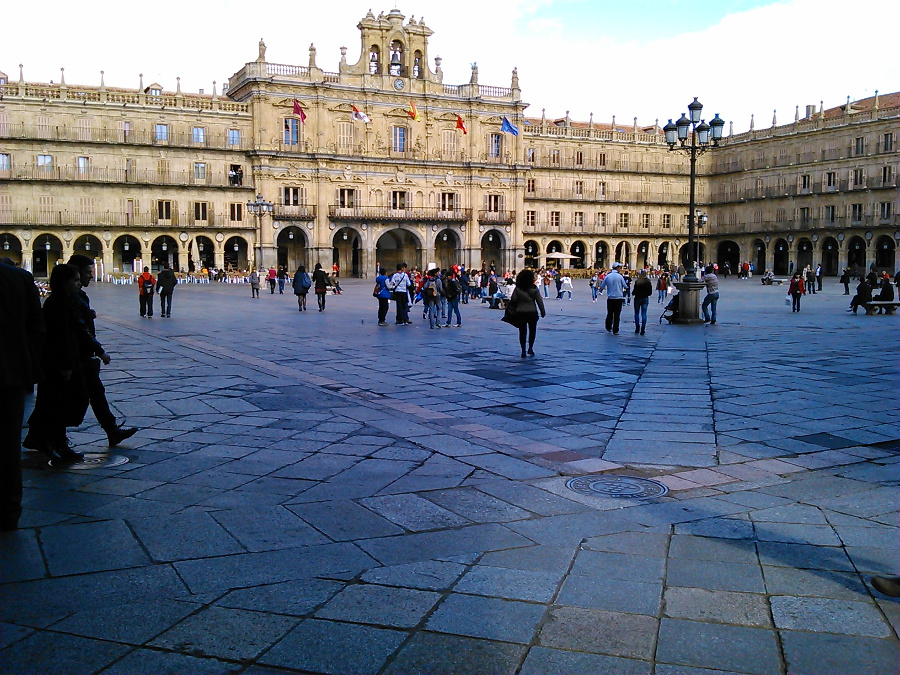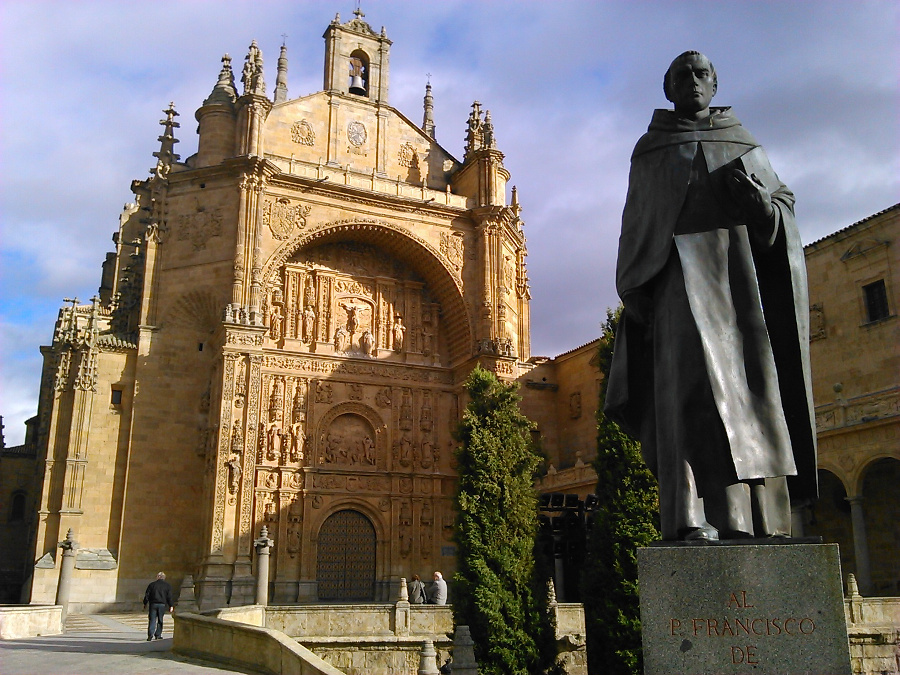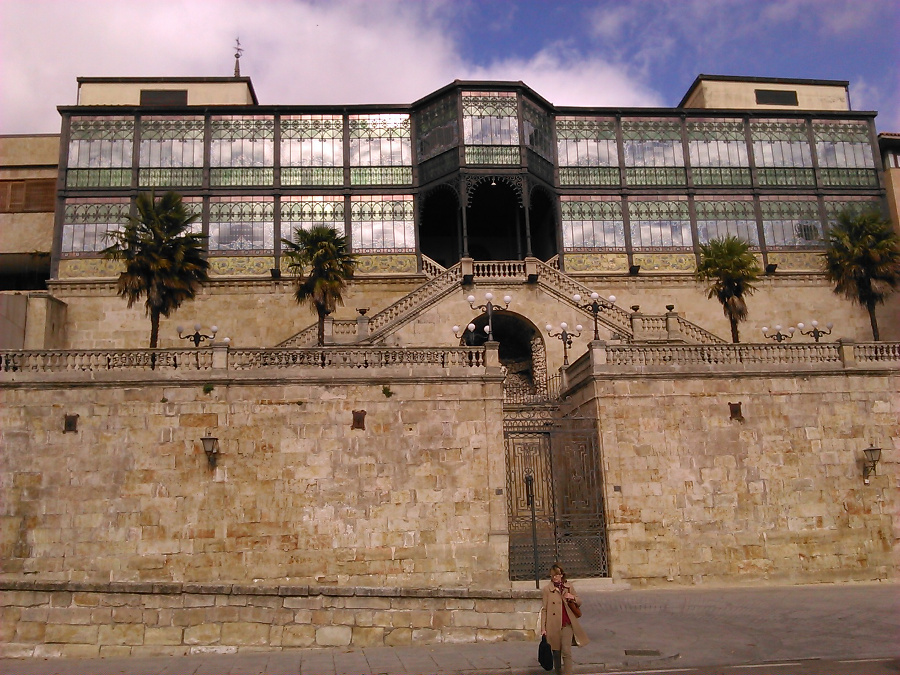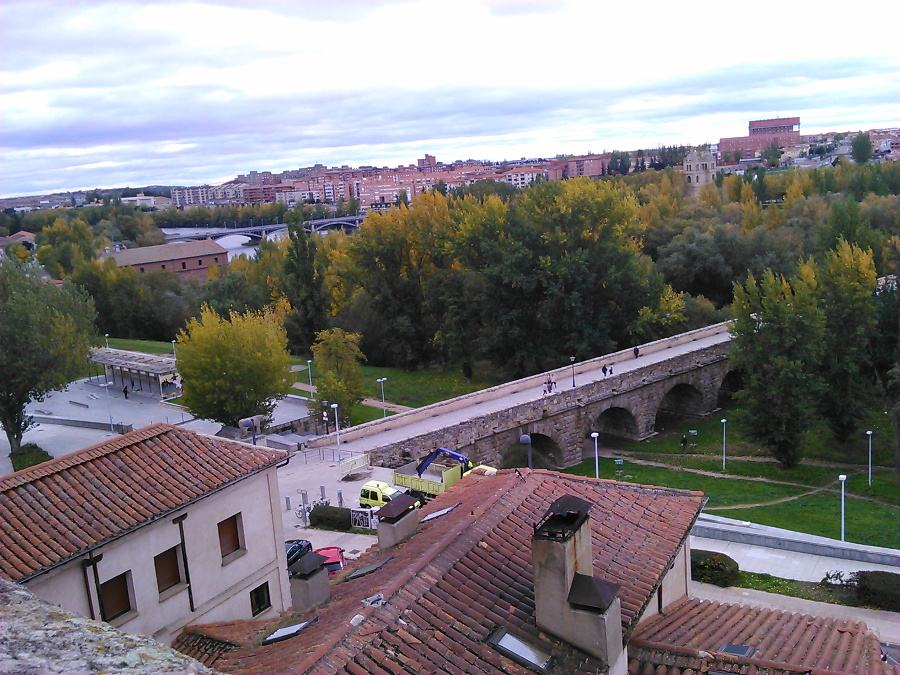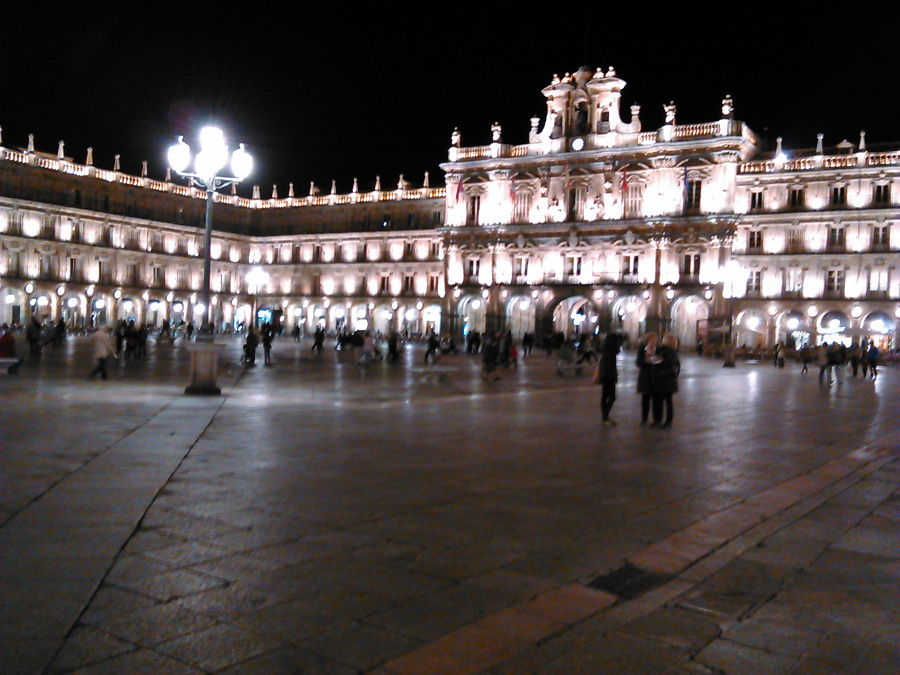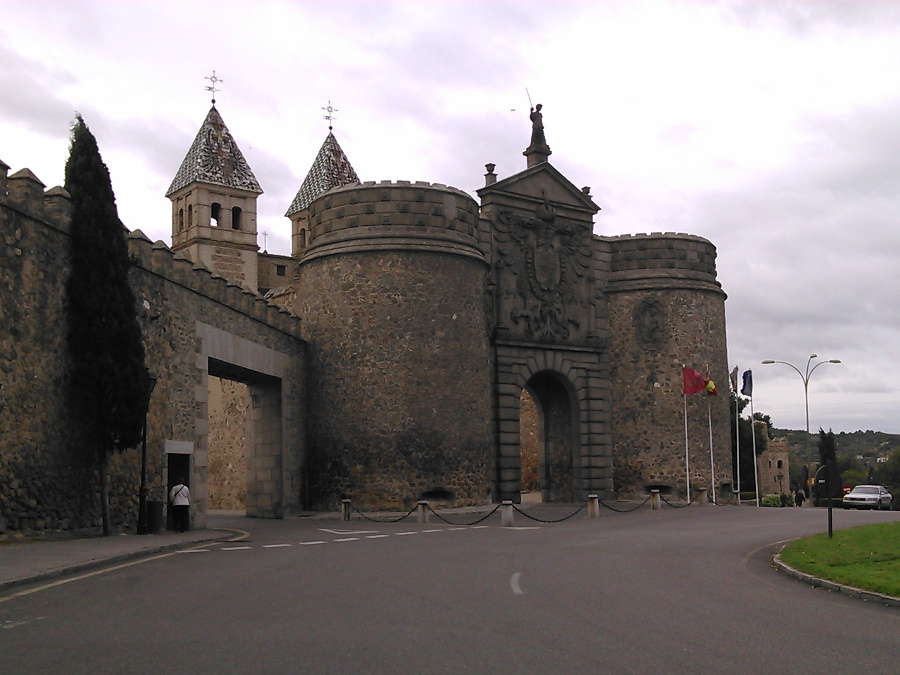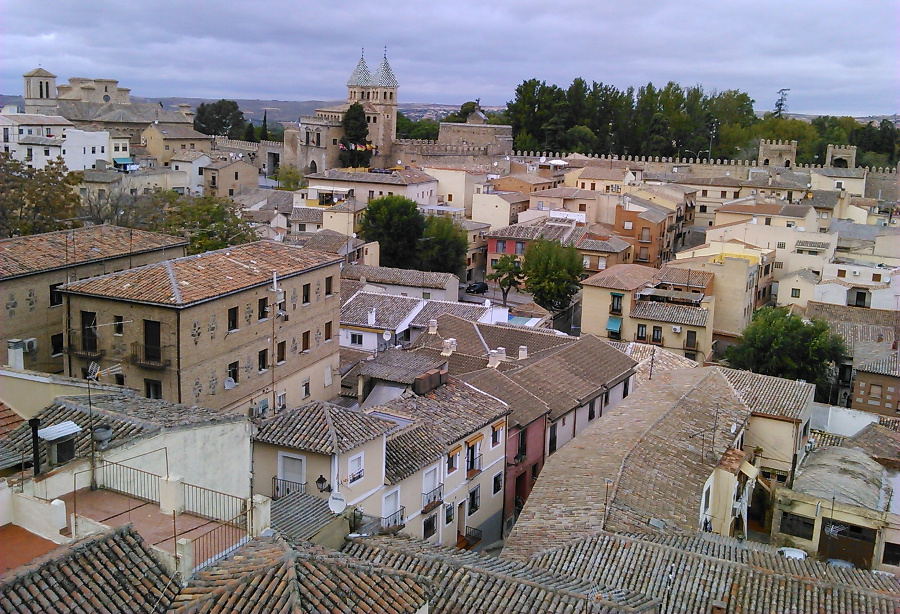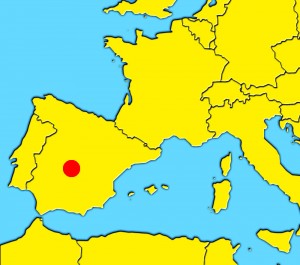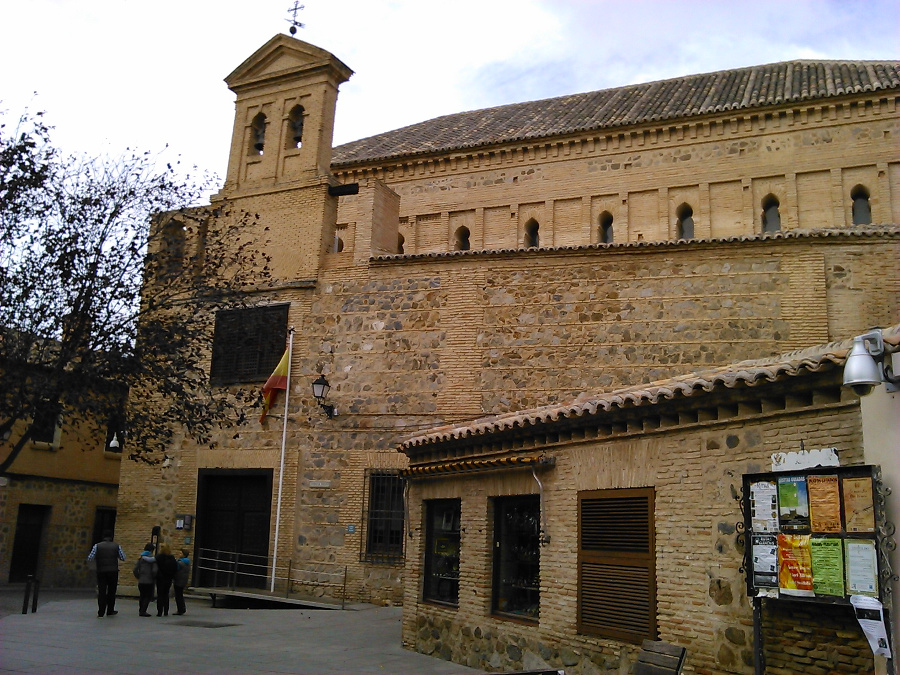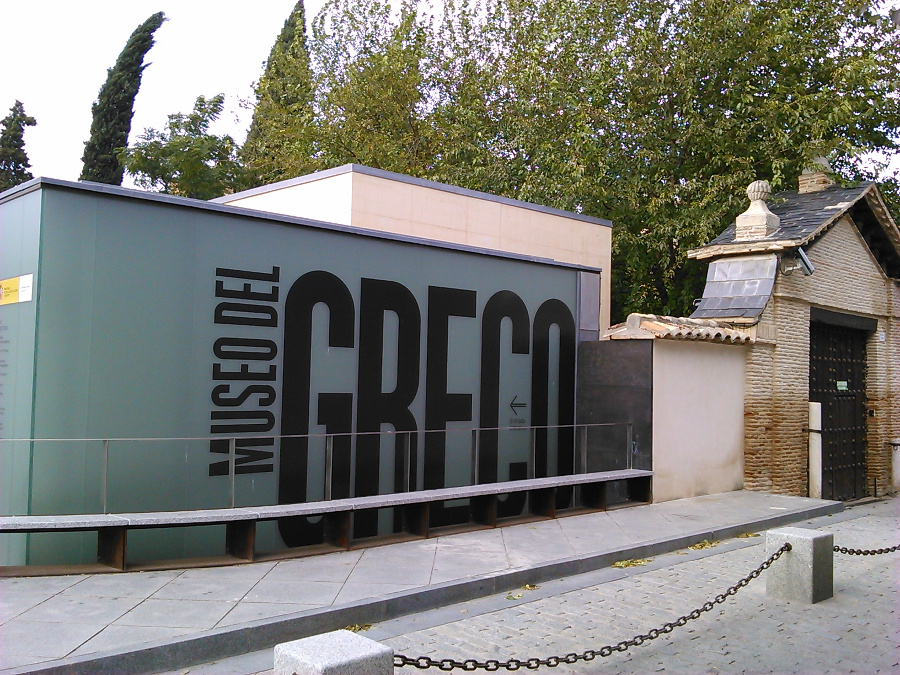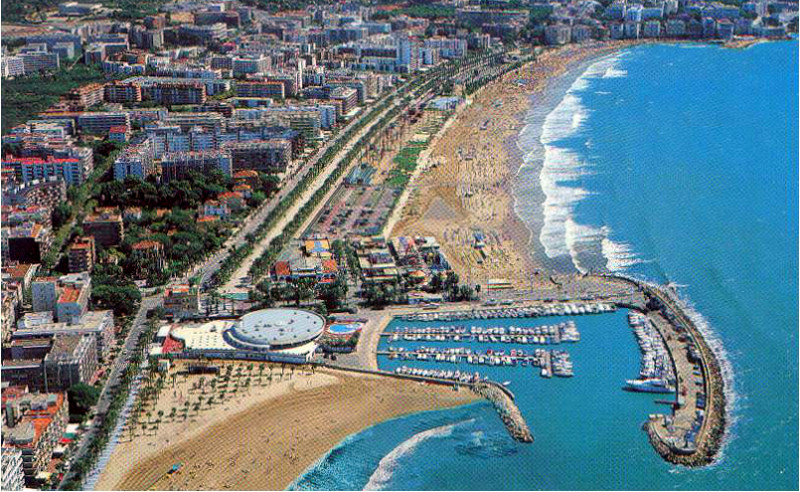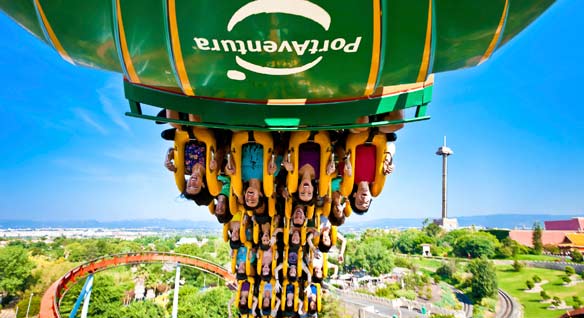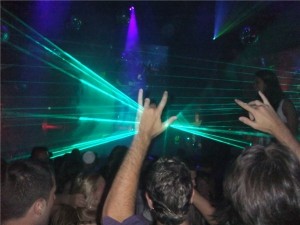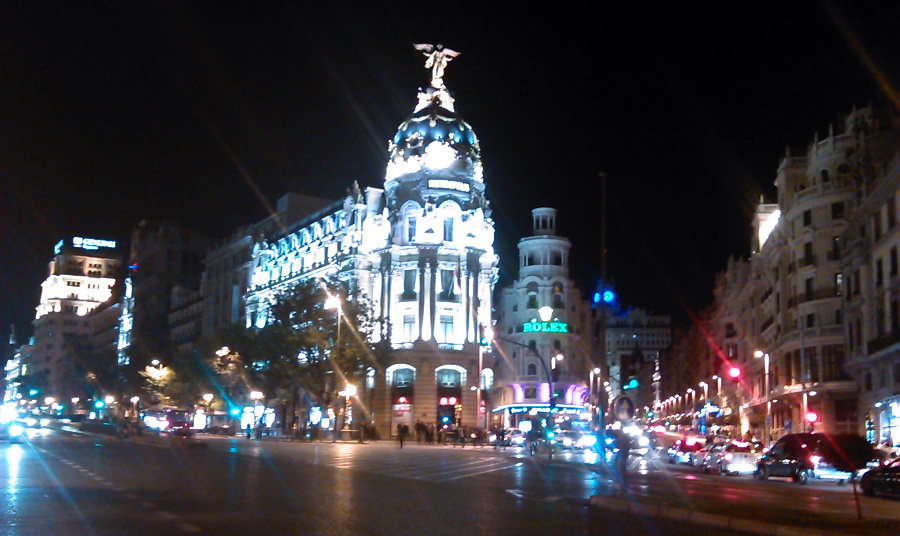
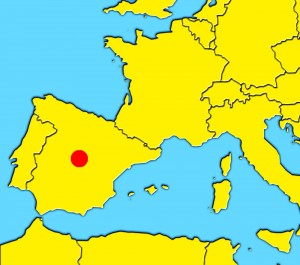 This tour is for tourists who are visiting Madrid, people who are living in Madrid but they haven’t visited all of the city yet, travellers who like knowing new cities or erasmus students in Spain… In this article we are going to tell you what are the most relevant places in Madrid: From popular streets, parks and squares, to monuments, museums, football stadiums or restaurants and pubs areas.
This tour is for tourists who are visiting Madrid, people who are living in Madrid but they haven’t visited all of the city yet, travellers who like knowing new cities or erasmus students in Spain… In this article we are going to tell you what are the most relevant places in Madrid: From popular streets, parks and squares, to monuments, museums, football stadiums or restaurants and pubs areas.
Our trip are going to be organized in 8 days (one week and one extra day): In the first four days we will visit the most important sites of the city (monuments, important buildings, palaces…), in the next three days we will see some popular places in where the citizens are used to staying (amenities, places to rest or to have a lunch, night life…). The last day, the eighth day, is an extra day with some suggestions about other cities and towns near Madrid that, if you have enough time, you will enjoy visiting some of them.
Tip: Notice that the routes are thought to be done on foot, and the streets and buildings of each day are placed close to each other. Despite all, it’s highly recommendable to have a map in your hands before starting each route (you have a touristic map of Madrid on the end of this page).
Day 1: Plaza España, Templo de Debod, Palacio Real, Catedral de La Almudena, Mercado de San Miguel, Plaza Mayor, Puerta del Sol.
The first day we are going to start visiting the most traditional sites of Madrid. Probably this is the route that most tourists visit because it’s a nice walk around the centre of the city. The start point is Plaza de España (metro lines 3 and 10).
– Plaza de España (Spain Square): Almost every city in Spain has its own “Plaza de España”. In this one, you can find the first skyscrapers built in Spain, and a beautiful fountain in the middle of the square with a statue of Don Quijote and Sancho Panza.
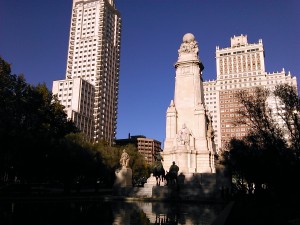
– Templo de Debod (Debod Temple): This magnificent Egyptian temple is located in Parque del Oreste, 5minutes on foot from Spain Square. Although the temple was once in Egypt, it was disassembled in 1960 and translated to Spain to avoid its inundation because of the construction of a dam in Egypt.
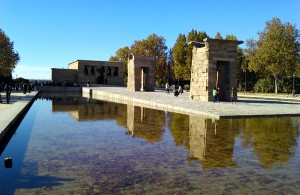
– Jardines de Sabatini (Sabatini Gardens): These gardens are placed by Royal Palace, and also close to El Senado building.
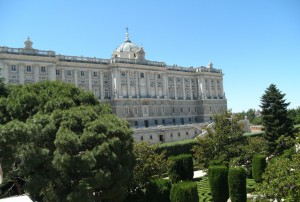
– (Optional: El Senado)
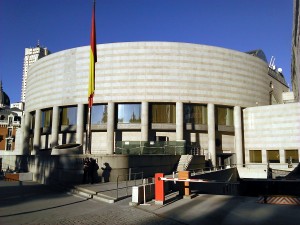
– Jardines de Oriente (Oriente Gardens): A traditional square with beautiful gardens and two rows of statues on this sides. In the center of the square there is a monument of Felipe IV. Also, in the background of the photo, behind the Felipe IV, you can see the Royal Palace.
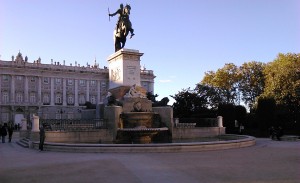
– Palacio Real (The Royal Palace): The palace was built between 1738 and 1755, and the king Felipe V (1683-1746) ordered its construction. Being one of the most emblematic buildings of Madrid, this large palace might some French tourist remind of the Luvre Palace. Visitors should stare its Royal Chapel, The Royal Armoury which is one of the most important of Europe, The Throne Hall and Royal Chemist’s all of them are worth a visit. Moreover the palace has a art galery with stunning paintings.
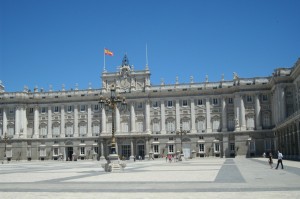
– Catedral de La Almudena (Almudena Cathedral): This is the main cathedral of Madrid. It is placed in front of the Royal Palace.
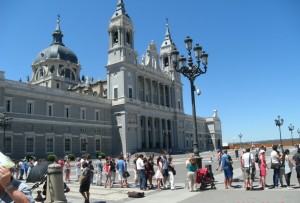
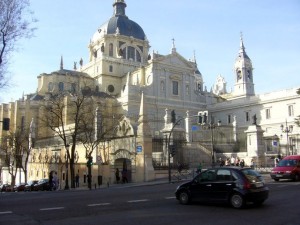
– (Optional: Opera Square and Teatro Real)
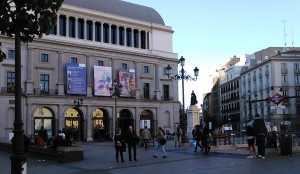
– Mercado de San Miguel (San Miguel Market): Inside of this famous market you will find an incredibly variety of food: juices, “tapas”, “croquetas”, hamburgers, fruit, fish… all of this of the highest quality. The structure of the market was built in 1913 and consists in a beautiful combination of iron and glass. Before 1913, the market already existed, but these stalls was placed in the street.
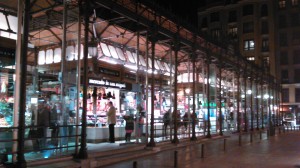
– Plaza Mayor (Main Square): The Main Square was built around 400 years ago. It is surrounded by charming three-storey buildings, painted mostly in red, with beautiful windows. It was built when Madrid became a capital city of Spain. Before this, the Main Square was used as a market with vegetables and fruits. The construction started in 1617 and was finished 2 years later. It was the place of bull fightings, theatrical plays, knights’ tournaments or executions. Now it is a place full of restaurants and pubs.
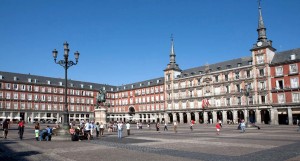
– Puerta del Sol (Sun Square): Puerta del Sol (which means “Sun Gate”) is the name of the most famous square in Madrid. It is located in the city center, and it is connected with the rest of the city with the 1, 2 and 3 Subway Lines, and other trains lines which start there and finish in the suburbs and towns placed around Madrid. This emblematic place is one of the reference points more used in the city, and many citizens are used to dating with other people from this point.
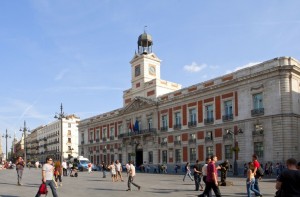
Day 2: Museo Reina Sofia, Parque del Retiro, Puerta de Alcalá, Plaza de Cibeles, Gran Via.
Today we will visit more emblematic places in the center of the city. Take in account that Reina Sofia Art Center and Retiro Park are huge sites, so you will need at least 2 or 3 hours to see each of them. To start the route in Reina Sofia, go to Atocha Metro Station (Line 1).
– Museo Reina Sofia (Queen Sofia Art Center): This art gallery forms part of the “Madrid’s triangle”, next to Prado Museum and Museum of Thyseen-Bornemisza. These three art galleries are must-see places in Madrid. Each of them is full of masterpieces of art. This museum is dedicated to the modern art, mostly of the 20th century.
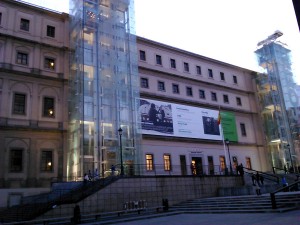
– (Optional: Estación de Atocha): Atocha train station. This station it is the most used train and metro stations of Madrid, so if you have to travel by train, probably you will have to go there. Inside it, there is a greenhouse with plants and a small “lake” with turtles.
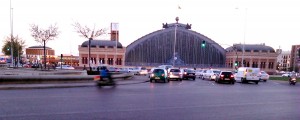
– Parque del Retiro (Retiro Park): The Retiro Park (Parque del Retiro) is a very popular park placed in the center of Madrid. It covers more than one square kilometer and it contains a lake with boats, many monuments, fountains, statues, gardens, restaurants and of course, a lot of trees and grass. If you want to visit Retiro Park, notice that you will need at least 3 hours to see it all.
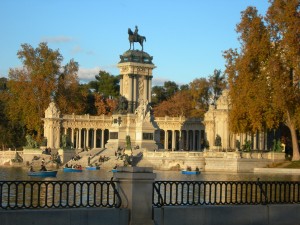
– Puerta de Alcalá (Alcala Gate): The Alcalá Gate is placed in Alcalá Avenue, just between Cibeles Square and one of the entrances of Retiro Park. The monument was built in 1778 and it’s the most popular “gate” in Spain.
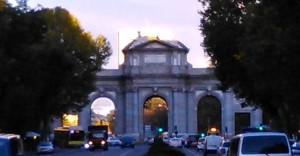
– Plaza de Cibeles (Cibeles Square): Cibeles Square is placed in the center of Madrid, at the cross between Alcalá Avenue, Recoletos and Prado Avenue. There are several reasons because this place is very popular. On one hand it’s in the middle of many remarkable monuments and buildings (in one direction you have Gran Via and Puerta del Sol; in other direction you can visit Retiro’s Park, the most famous park of Madrid, and in the other two directions you have the most important museums of the city: Prado, Reina Sofia, Tyssen and Caixaforum). On the other hand, some remarkable buildings are in Cibeles Square, as Palacio de Comunicaciones, Banco de España and Cibeles Fountain, which is in the center of the roundabout.
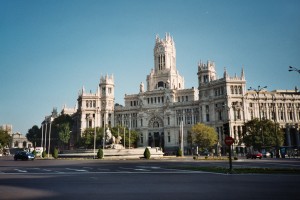
– Gran Via Avenue: Gran Via is one of the most famous streets of Spanish capital. It is situated in the center of Madrid and was built 100 years ago. The idea of the street was to join and improve the communication between the districts of the capital city.
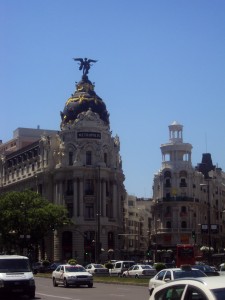
Day 3: Museo del Prado, Caixaforum, Museo Tissen, Plaza de Neptuno, El Congreso.
Today we are going to visit more museums: El Prado, Thyssen and Caixa Forum. El Prado is the most important one, the rest of them can be interesting if you enjoy visiting museums, if not, you can skip them. To arrive at El Prado, you can go from Atocha Metro Station (Line 1), or from Cibeles (Line 2) walking 5 minutes.
– Museo del Prado (Prado Museum): El Prado, Reina Sofia, Tyssen, Caixaforum… All of these museums are in the city center. Although we know that it’s impossible to visit all of them on one day, we recommend you to visit El Prado and Reina Sofia, which are two of the best museums in the world (notice that you will need about 4hours to visit each one).
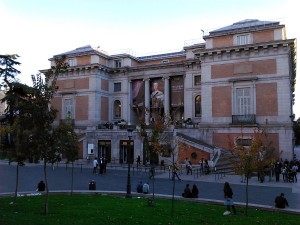
– Caixaforum (Museum)
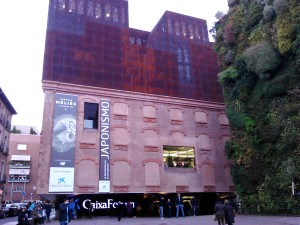
– Museo Thyssen (Thyssen Museum)
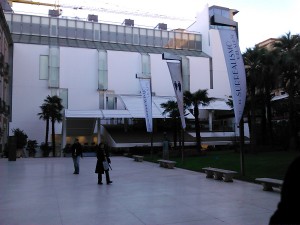
– Fuente de Neptuno (Neptuno fountain): This fountain is placed in Cánovas del Castillo Square. Since Cibeles Fountain is used by the supporters or Real Madrid football team, this another fountain is used by the Altetico de Madrid football team’ supporters to celebrate its triumphs.
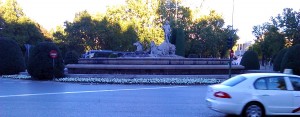
– Congreso de los diputados
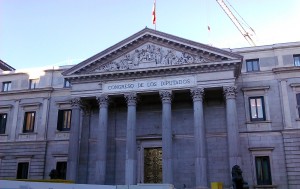
– Puerta del Sol (Sun Square): Puerta del Sol (“Sun Gate”) is the name of the most famous square in Madrid.
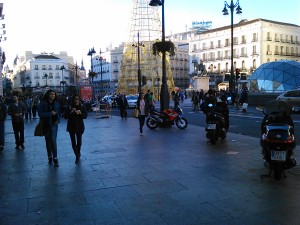
– (Optional: Shopping at Calle Preciados, and eating at Calle Cadiz and surroundings): Preciados Street is between Puerta del Sol and Callao Square / Gran Via Avenue. This street is always full of people, and it’s a common place to go shopping.
On the other hand, Cadiz Street is behind Casa de Correos Building, in Puerta del Sol. This street and its surroundings is full of restaurants and bars, so it’s the perfect place to take a lunch and rest in any terrace.
Day 4: Las cuatro torres de Madrid, Puerta de Europa, Torres Kio, Paseo de la Castellana, Estadio Santiago Bernabeu, Nuevos Ministerios, Plaza de Colón, Plaza de Cibeles.
Today we are going to see the modern part of the city. We will start visiting The four Skyscrapers, in Begoña metro station, and then we will go trough Paseo de la Castellana until the city centre.
– Las 4 torres de Madrid (The four Skyscrapers): This four skyscrapers can be seen from many places of the city.
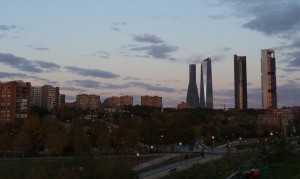
– Puerta de Europa and Torres Kio (Europa Gate and Kio Skycrapers): This skyscrapers are in the beginning of Castellana Avenue, one of the wider and longer avenues of Madrid, which begins here and ends in Colón Square, near to Cibeles.
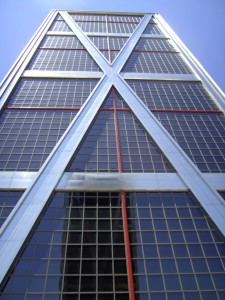
– Paseo de la Castellana (Castellana Avenue): An emblematic avenue, full of shops, offices …and of course, vehicles 🙂
– Estadio Santiago Bernabeu (Santiago Bernabeu Football Stadium): The stadium of the Real Madrid Football Team.
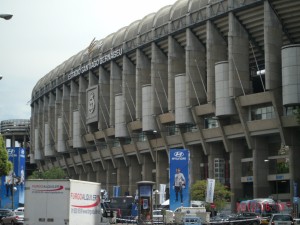
– (Optional: Nuevos Ministerios): Nuevos Ministerios is a Metro Station located in Castellana Avenue. It’s very popular because its commercial centers.
– Museo nacional de ciencias naturales (Museum of Natural Sciences): If you are interested in the natural sciences, this museum is situated in the Palace of the Arts and the Industry, in José Gutiérrez Street, No 2 (the building can be seen from Castellana Avenue – Vitrubio).
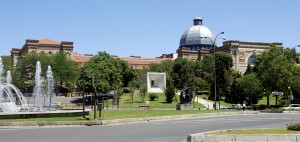
– Plaza de Colón (Colon Square): This square is at the end of Castellana Avenue. Here you can see the Cristobal Colon Statue, the Colon Skyscraper and behind the square, the building of the National Library (Biblioteca Nacional).
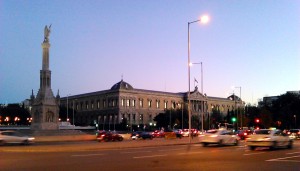
– Monumento a Cristobal Colón (Colon monument) and Torres Colón (Colon Skycraper).
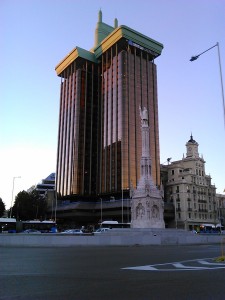
– Biblioteca nacional (National library)
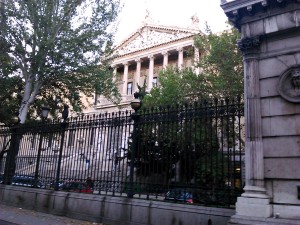
Finally, from Colon Square, going through Paseo de Recoletos you will arrive at Cibeles.
– Plaza de Cibeles (Cibeles Square): Cibeles Square is placed in the center of Madrid, at the cross between Alcalá Avenue, Recoletos and Prado Avenue.
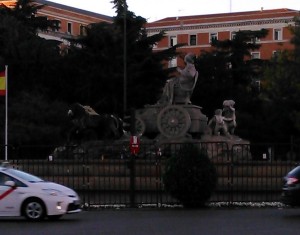
Day 5 (Friday): Plaza de Tribunal, Barrio de Malasaña, Calle de Fuencarral, Barrio de Chueca, Mercado de San Antón, Gran Via, Plaza de Callao.
At weekend you have to visit the popular neighborhoods of Malasaña and Chueca, in the city centre. They are separated from Fuencarral Street, which is full of shops and restaurants. The start-point of this route is in Tribunal metro station (Line 2).
– Plaza de Tribunal (Tribunal Square): Inside the old Tribunal Building, there is a museum with maps of Madrid between the 18th and 20th centuries and a big model of the city.
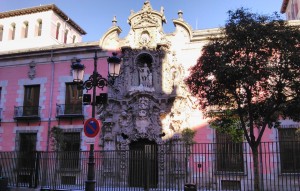
– Barrio de Malasaña (Malasaña Neighborhood): This traditional neighborhood is famous among the young population. You can discover a lot of alternative shops, restaurants and pubs in this neighborhood. (Photo: Plaza del 2 de mayo)
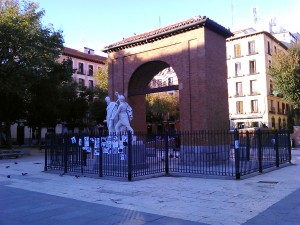
– Calle de Fuencarral (Fuencarral Street): One of the most famous streets to go shopping. It also separates Malasaña from Chueca neighborhood: On one side is Malasaña and on the another one Chueca.
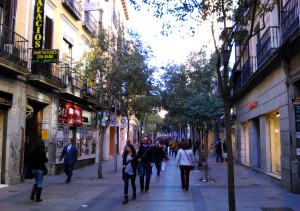
– (Optional: Mercado de Fuencarral / Fuencarral Market): This Market is in Fuencarral Street, number 45. It is very popular between the young people. In there you will find a lot of fashionable and alternative clothes, complements and souvenirs.
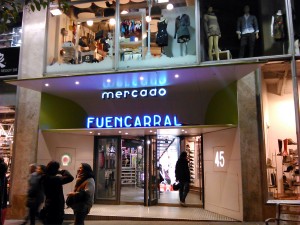
– Barrio de Chueca (Chueca Neighborhood): Chueca is popular because its restaurants and its fashionable shops. It is also a reference in the gay culture.
– Mercado de San Antón (San Anton Market): This market is placed in the center of Chueca Neighborhood, It is focused in “tapas” and premium food to eat in its stalls and restaurants.
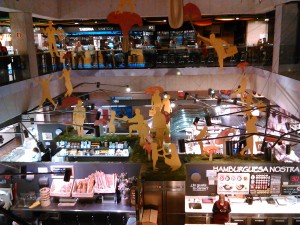
– (Optional: Espacio Telefonica): This is a art space that you can visit for free. It is placed in the cross between Fuencarral Street and Gran Via.
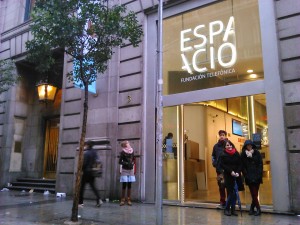
– Gran Via Avenue: Gran Via is one of the most famous streets of Spanish capital. It is situated in the center of Madrid and was built 100 years ago. The idea of the street was to join and improve the communication between the districts of the capital city.
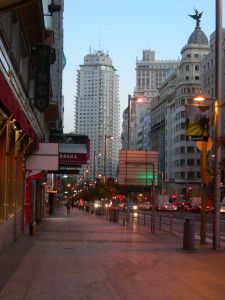
– Callao Square: This square is in Gran via. Its surroundings are full of theaters, cinemas and restaurants. The perfect place for a weekend!
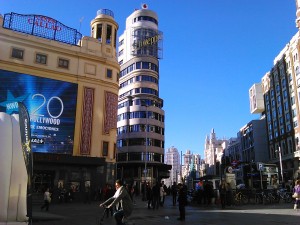
Finally… night life in Madrid. This Friday, we recommend you to visit during the afternoon and night Malasaña or Chueca. In there, there are always a good atmosphere and a lot of people having fun.
Day 6 (Saturday): Choose one option…
We haven’t visited yet many important sites of Madrid. As it’s impossible to visit all of them in one day, we propose you to choose some of them depending on yours preferences.
Option 1 -> El Escorial: The Royal Monastery of San Lorenzo del Escorial is an impressive building located in the surroundings of Madrid where the kings of Spain used to live. The palace was built in the 16th century, and currently it has a museum, a monastery, a crypt, a basilic, a library and gardens.
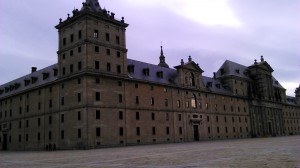
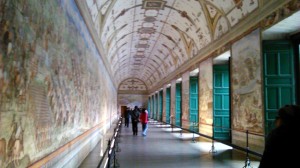
Option 2-> Route: Ciudad universitaria, Moncloa, Parque del Oeste, Teleferico de Rosales and Casa de campo.
Photos: Ciudad Universitaria (seen from Moncloa Metro Station), Teleférico de Rosales (placed in Parque del Oeste, near Templo de Debod) and Madrid’s Landscape, seen from Casa de Campo.
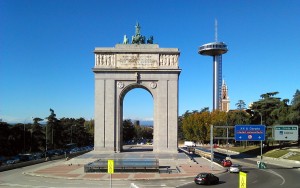
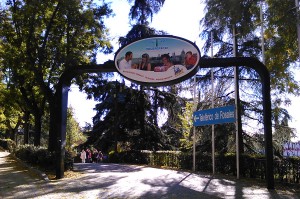
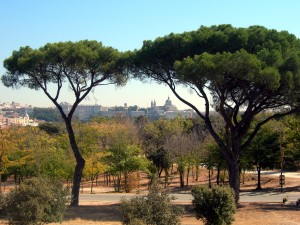
Option 3 -> Parque de atracciones or Parque Warner: The two most visited attraction parks of Madrid. In summer, it could be interesting to visit one of them to enjoy its roller coasters and its aquatic attractions.
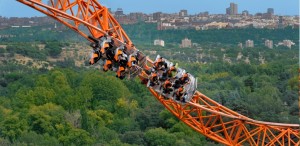
Option 4 -> Route: El Matadero (art center), Madrid Rio (river and park) and Vicente Calderón (At. Madrid football stadium).
Photos: A bridge in Madrid Rio and Vicente Calderón Stadium (located just near the river).
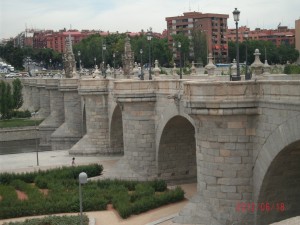
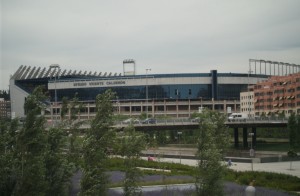
Option 5 -> Plaza de toros “Las Ventas”: It is a place where you can see the bull fights – a unique Spanish tradition. Its capacity – 23798 spectators makes it the third arena in the world. It is also considered to be the most important place for bullfighters in Spain.
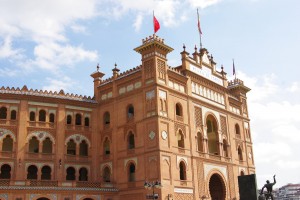
Option 6 -> Andén Cero: Once, this old metro station was part of the Line 1, but it was closed 70 years ago and currently is a museum where you can visit and imagine how were the first metro stations of Spain. It is placed in Chamberí.
Option 7 -> Museo de Sorolla. This museum is located in Paseo del General Martínez Campos 37.
Night life in Madrid: On Saturday, you can go to Puerta del Sol, Huertas Zone and Santo Domingo Square. This is the perfect place to eat, drink and meet people. It’s full of bars, restaurants, pubs and discotheques.
Day 7 (Sunday): El Rastro de Madrid and La Latina neighborhood.
On Sundays there are two places where the people use to go: El Rastro (a street market which covers several streets and where it is said that you can find near everything), and La Latina (a zone with a lot of bars and restaurants where the young people go to eat and chat).
– El Rastro de Madrid: In this street market you will find clothes, books, art, antiquities and any other kind of objects. The market is placed at Ribera de Curtidores Street and its surroundings all Sundays from 9:00 to 14:00 h. To arrive at the market, you can go to Tirso de Molina, Puerta de Toledo or La Latina Metro Stations.
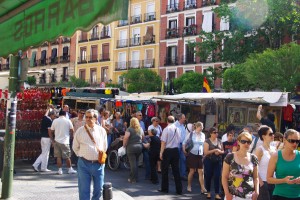
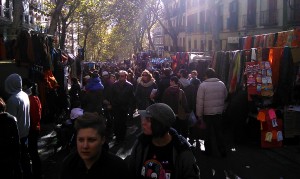
– La Latina neighborhood: In La Latina, the young (and not so young 🙂 ) people are used to going at midday and afternoon every weekend (specially on Sundays) to eat tapas, sandwichs and drink beer and wine in the bars of its streets. The zone with more bars and restaurants is in The Cava Alta and Cava Baja streets, and the terraces that you can find in its surroundings. Metro station: La Latina (Line 5).
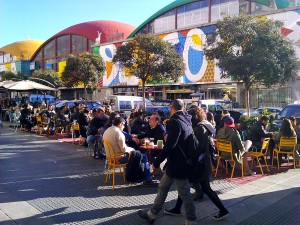
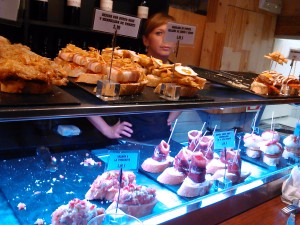
Day 8 (extra): Other interesting cities and towns to visit near Madrid.
There are many historical and touristic cities and towns near Madrid. Here we propose you some of them, where you can go by bus or by car in one or two hours approx.
You will need at least one day to visit each of these towns:
– Segovia: With its impressive roman aqueduct and its Alcazar, Segovia is a must for tourists who are visiting the central region of Spain.
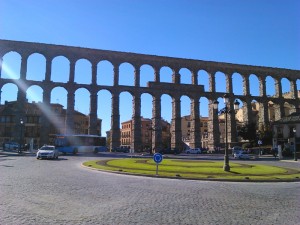
– Toledo: Toledo is an historical city with a lot of ancient buildings and monuments which make a medieval atmosphere for everyone who want to visit it.
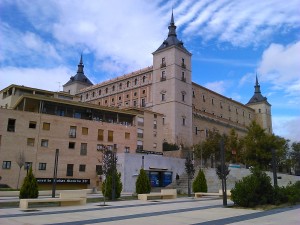
– Salamanca: Salamanca has the most ancient university of Spain. Also, visiting its historic centre is like to stay in the medieval age, surrounded of elegant stone-made buildings, churches, squares and monuments. Salamanca is surely one of the best maintained traditional cities of the country.
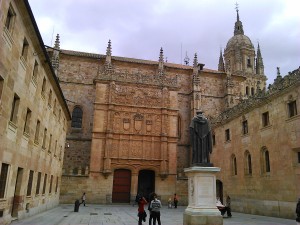
Touristic map of Madrid
Here you have a touristic map of Madrid with the relevant streets and monuments, and with the metro routes. You can click on it to see it bigger, or also you can ask for a map in any metro station of the city. (Notice that the map is a simplified version of the actual city. The location of the streets and buildings isn’t 100% accurate).
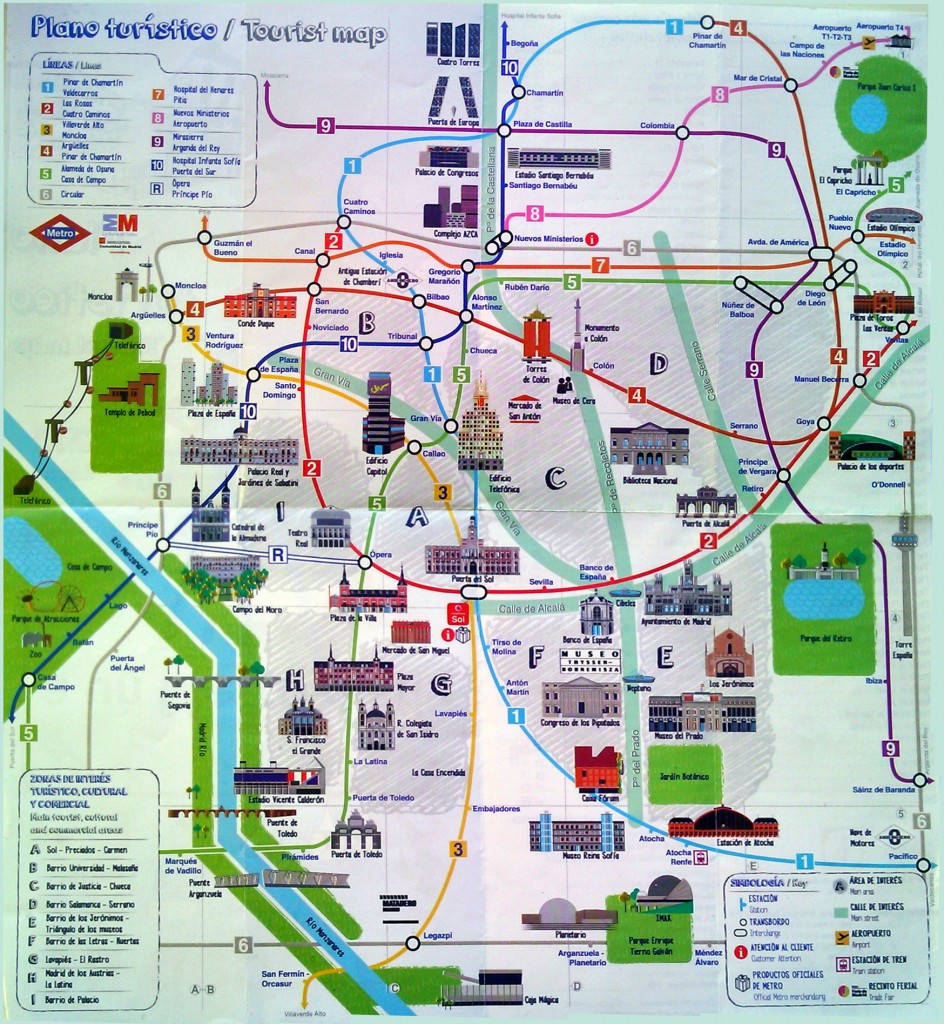
More cities to visit in Spain:
– Barcelona: This is the second bigger city of the country, and one of the most beautiful ones. Ideal for travel in summer, with a wide offer of cultural activities and a lot of party for young people.
– Seville city and Andalusía: This region is placed in the south of Spain. If you go there, you have to visit Seville, Granada, Cordoba, Cadiz and Malaga.
– Saragosse / Zaragoza: Saragosse is a city placed between Madrid, Barcelona and Valencia. It’s a nice city to visit for one weekend. Also, it has The Pirinees in its north, the perfect place to organize excursions, do camping in the nature in summer and skiing in winter.
– Galicia and Asturias Regions: The north-west of Spain is the “greenest” region of the country. Ideal for excursions in the nature, resting in the beach in summer and taste its gastronomy.
– Top best cities and sites to visit in Spain: Read here our list with the best destinations of Spain.
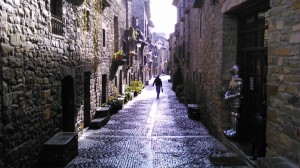 The old town of Ainsa is located uptown the village.
The old town of Ainsa is located uptown the village.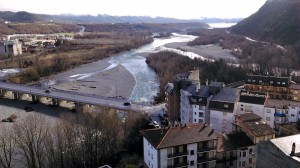 Ainsa surely has some of the most impressive balconies of the Pyrenees. From them can be seen Cinca River and Ara River, which joins just near the village.
Ainsa surely has some of the most impressive balconies of the Pyrenees. From them can be seen Cinca River and Ara River, which joins just near the village.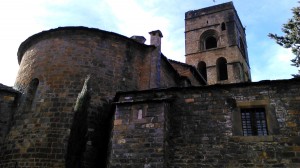 St. Mary Church (Iglesia de Santa Maria) is a Roman church built between the 11th and 12th centuries. From its tower, the people who ascend it can discover a view of the whole village.
St. Mary Church (Iglesia de Santa Maria) is a Roman church built between the 11th and 12th centuries. From its tower, the people who ascend it can discover a view of the whole village.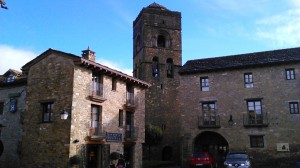 Beside the church is located the Main Square, where is the city hall, and from where can be seen the castle.
Beside the church is located the Main Square, where is the city hall, and from where can be seen the castle.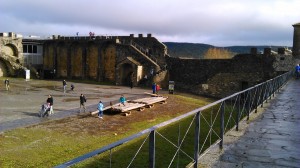 Located in the historic centre of Ainsa, this castle is dated from the eleventh century.
Located in the historic centre of Ainsa, this castle is dated from the eleventh century.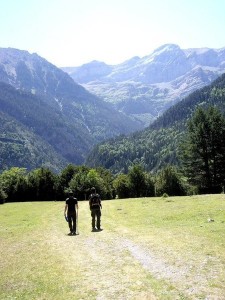 This natural park is one of the preferred natural parks chosen by the Spaniards to make excursions and enjoy the nature. Its routes through the mountains offers a wide variety of experiences for all ages. Its highest mountain is Monte Perdido (3,350 metres).
This natural park is one of the preferred natural parks chosen by the Spaniards to make excursions and enjoy the nature. Its routes through the mountains offers a wide variety of experiences for all ages. Its highest mountain is Monte Perdido (3,350 metres).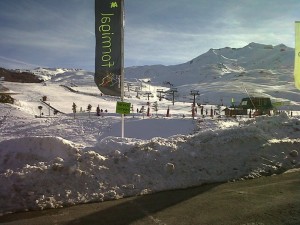 In winter, the Pyrenees ski stations are some of the most frequented places of Spain to ski (with Sierra Nevada at the south of the county). The Pyrenees can be separated in five zones depending on what region are located: Aragon, Catalonia, Navarra, France and Andorra.
In winter, the Pyrenees ski stations are some of the most frequented places of Spain to ski (with Sierra Nevada at the south of the county). The Pyrenees can be separated in five zones depending on what region are located: Aragon, Catalonia, Navarra, France and Andorra.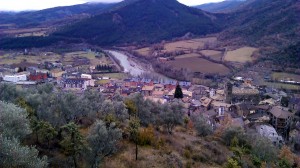 – Boltaña: This town is placed only 6 km away from Ainsa. It is also an ancient village with a traditional Old Town and a castle in the top of a hill from where can be seen a very beautiful landscape.
– Boltaña: This town is placed only 6 km away from Ainsa. It is also an ancient village with a traditional Old Town and a castle in the top of a hill from where can be seen a very beautiful landscape.